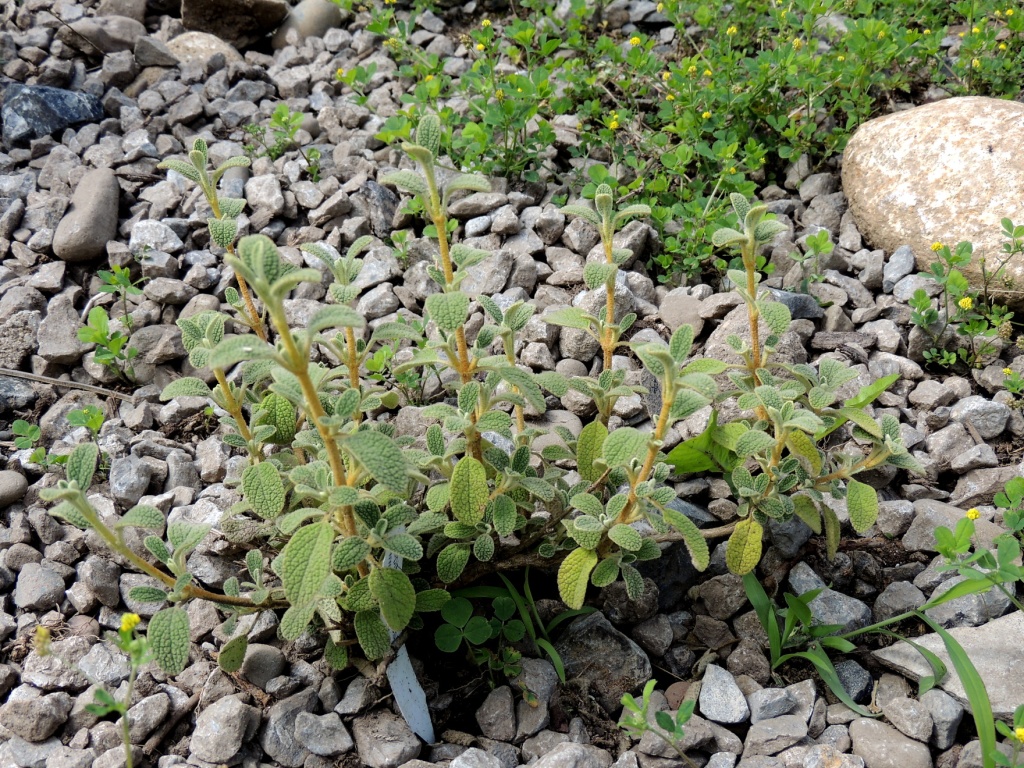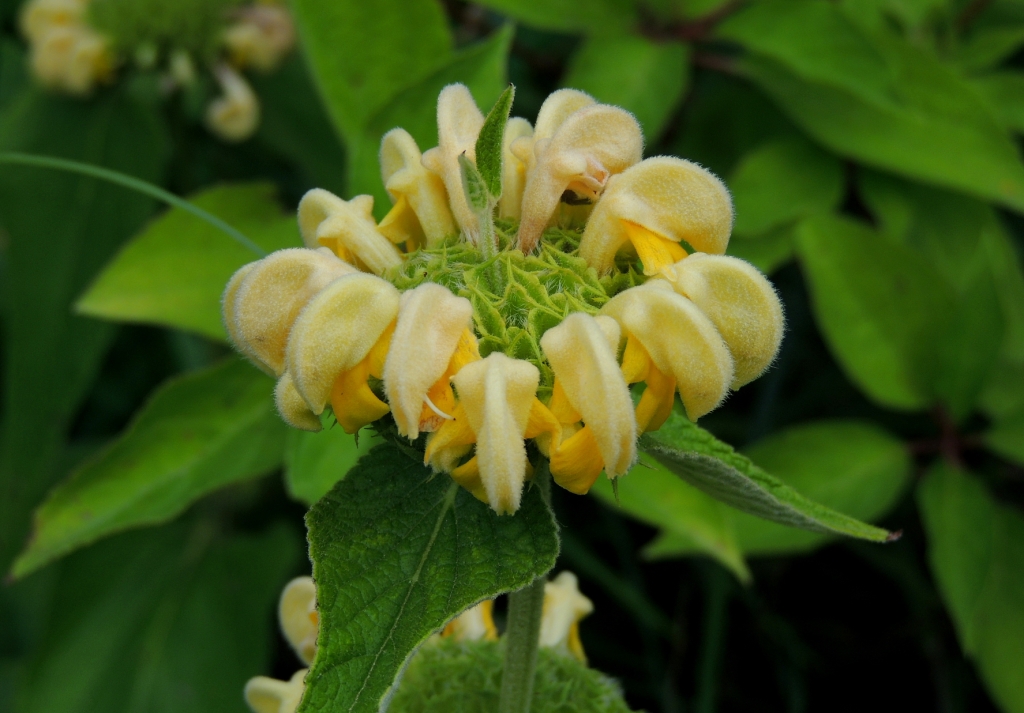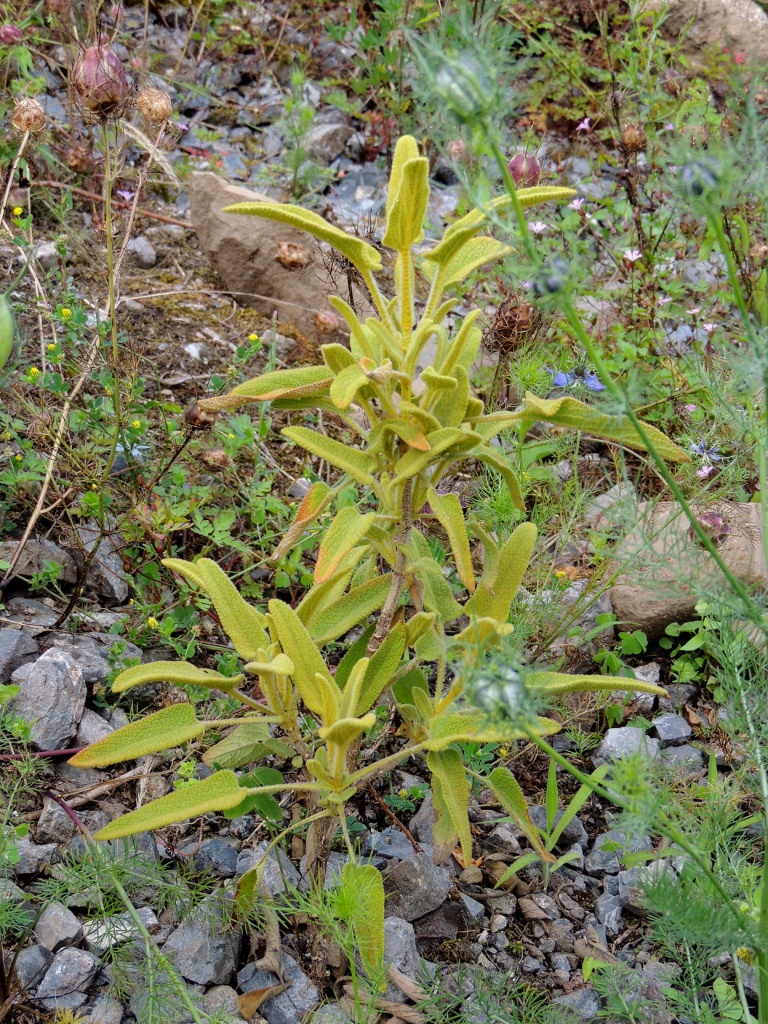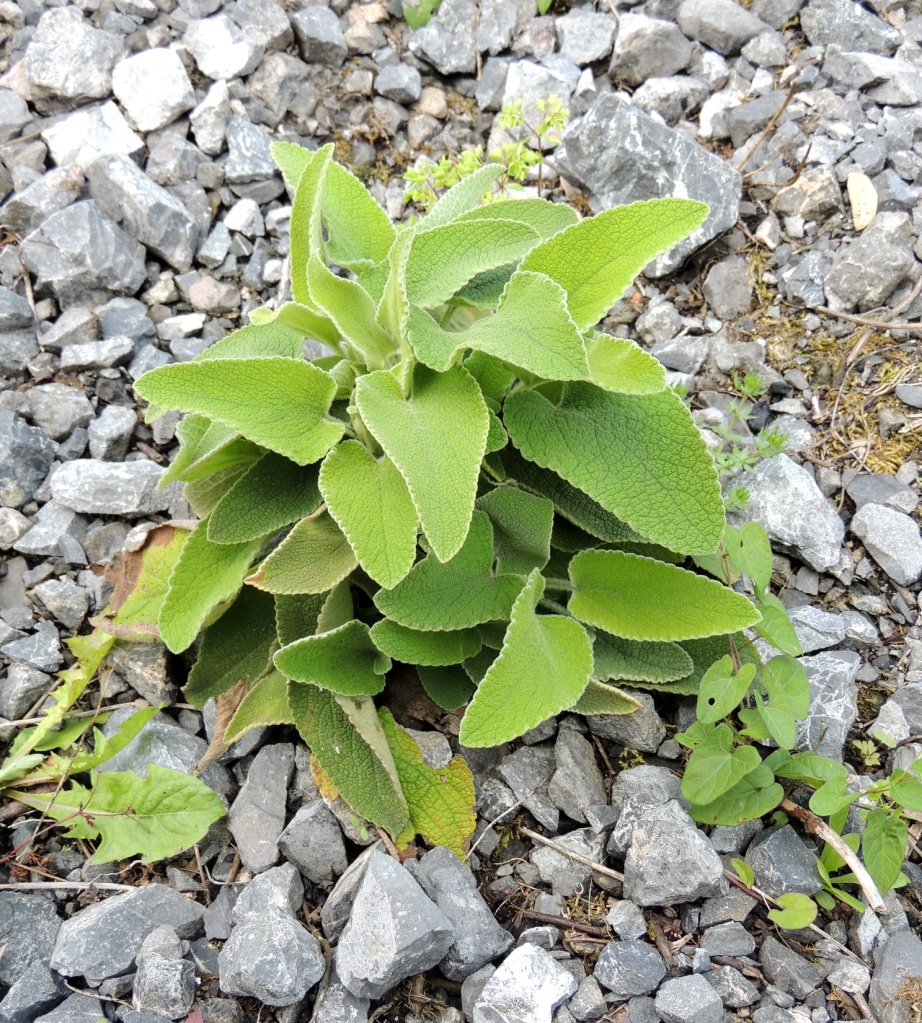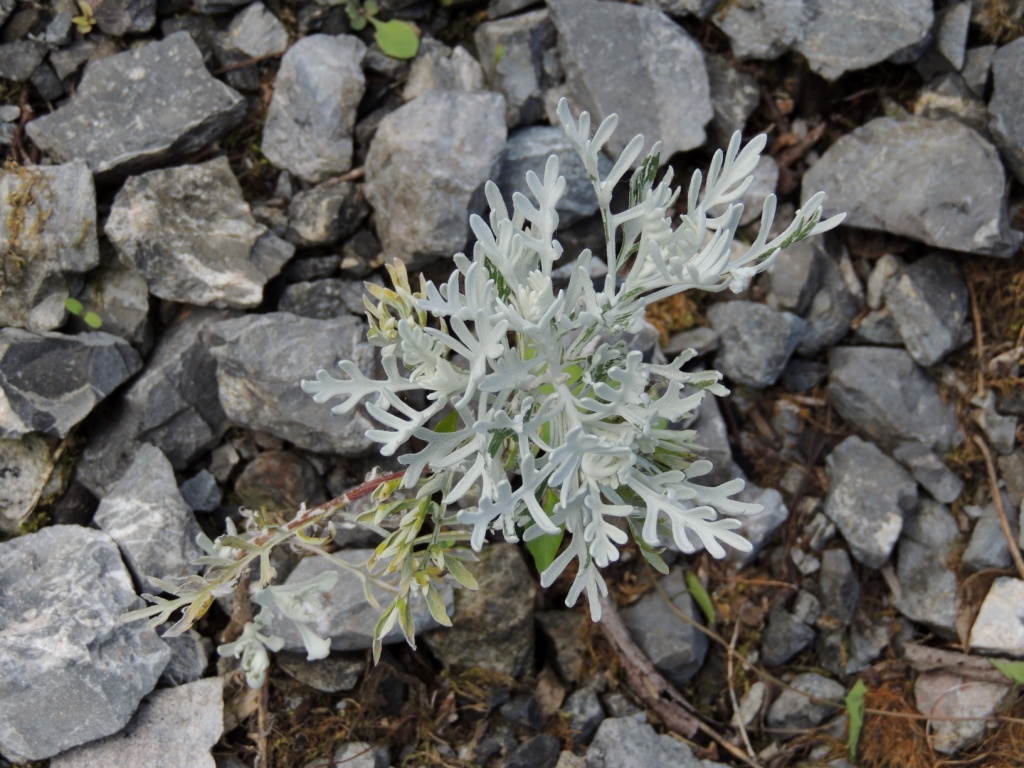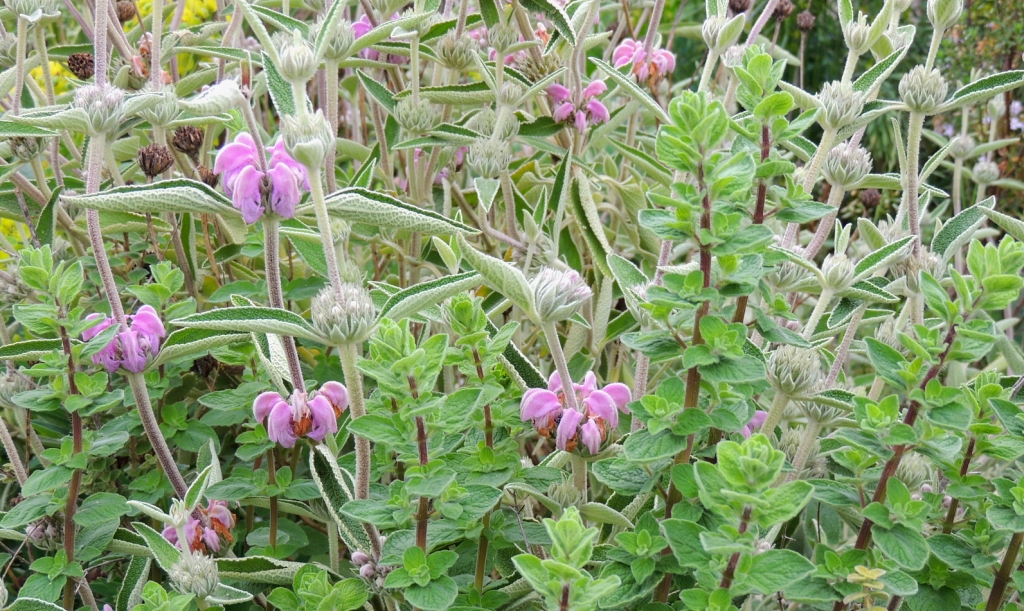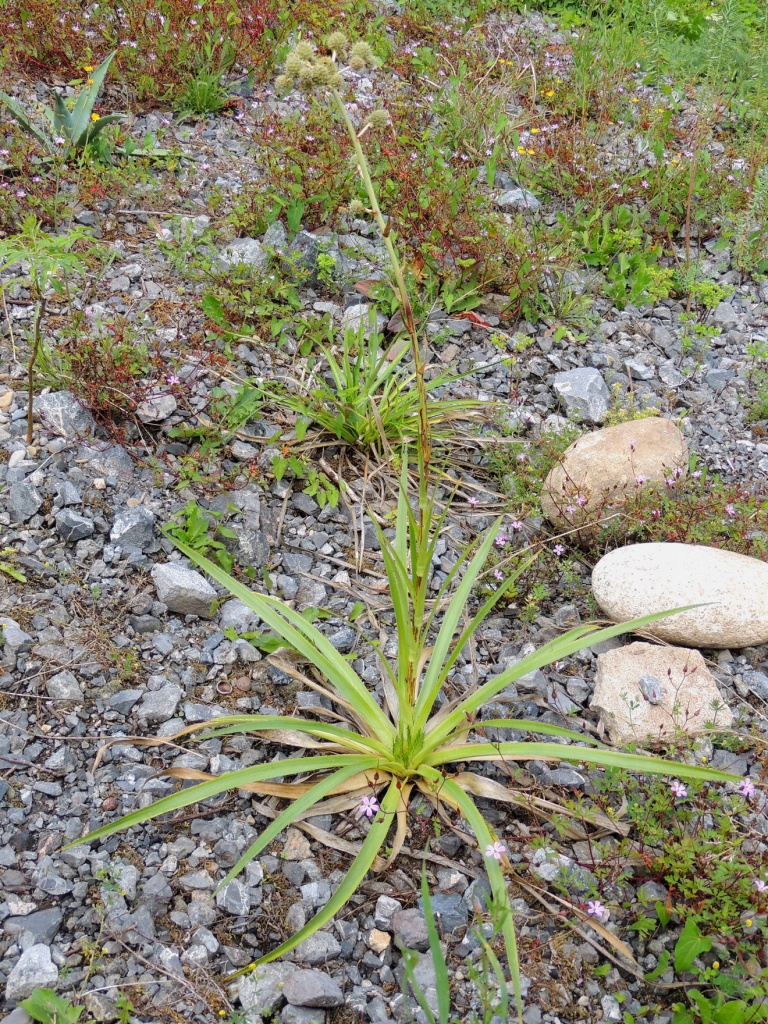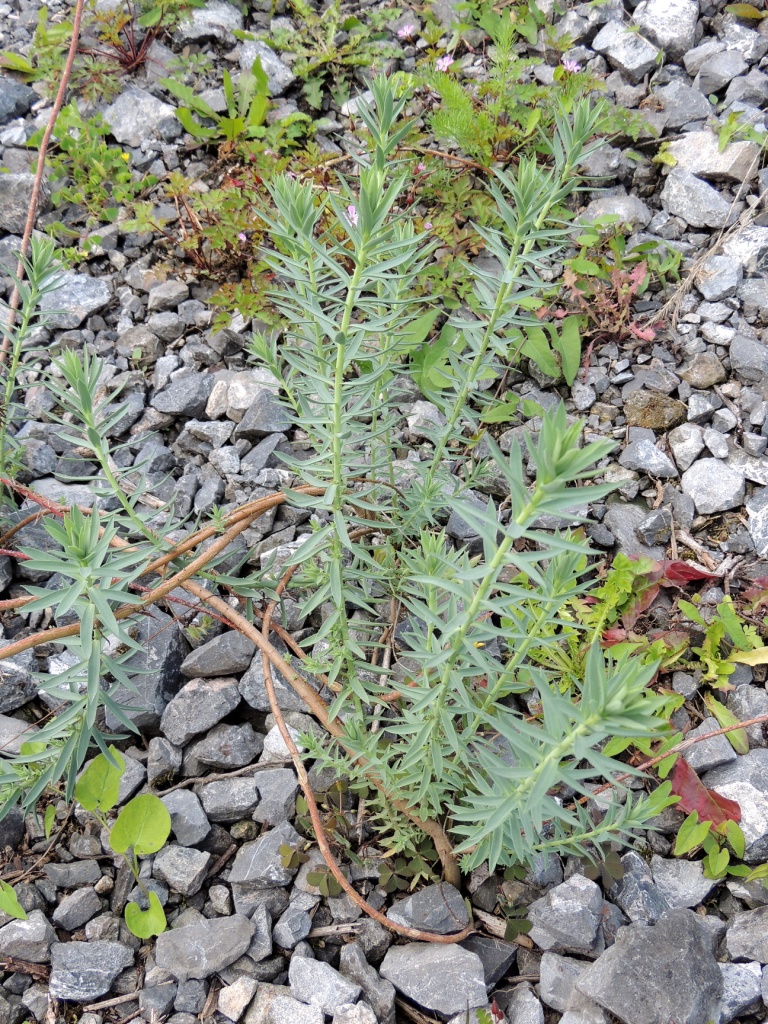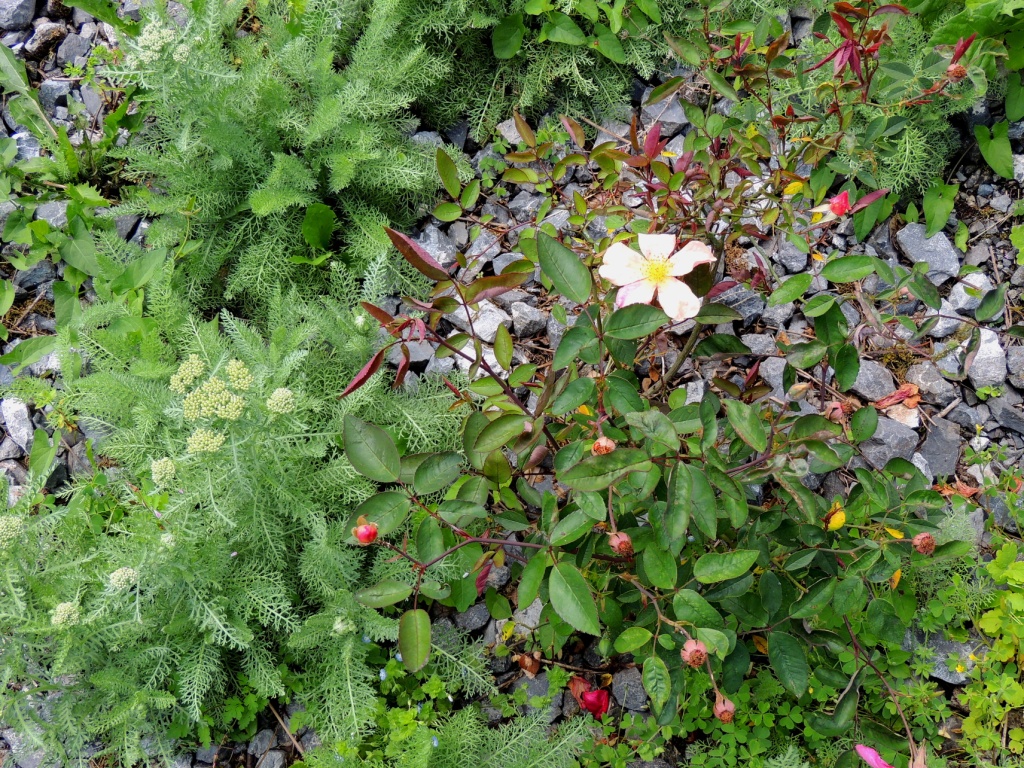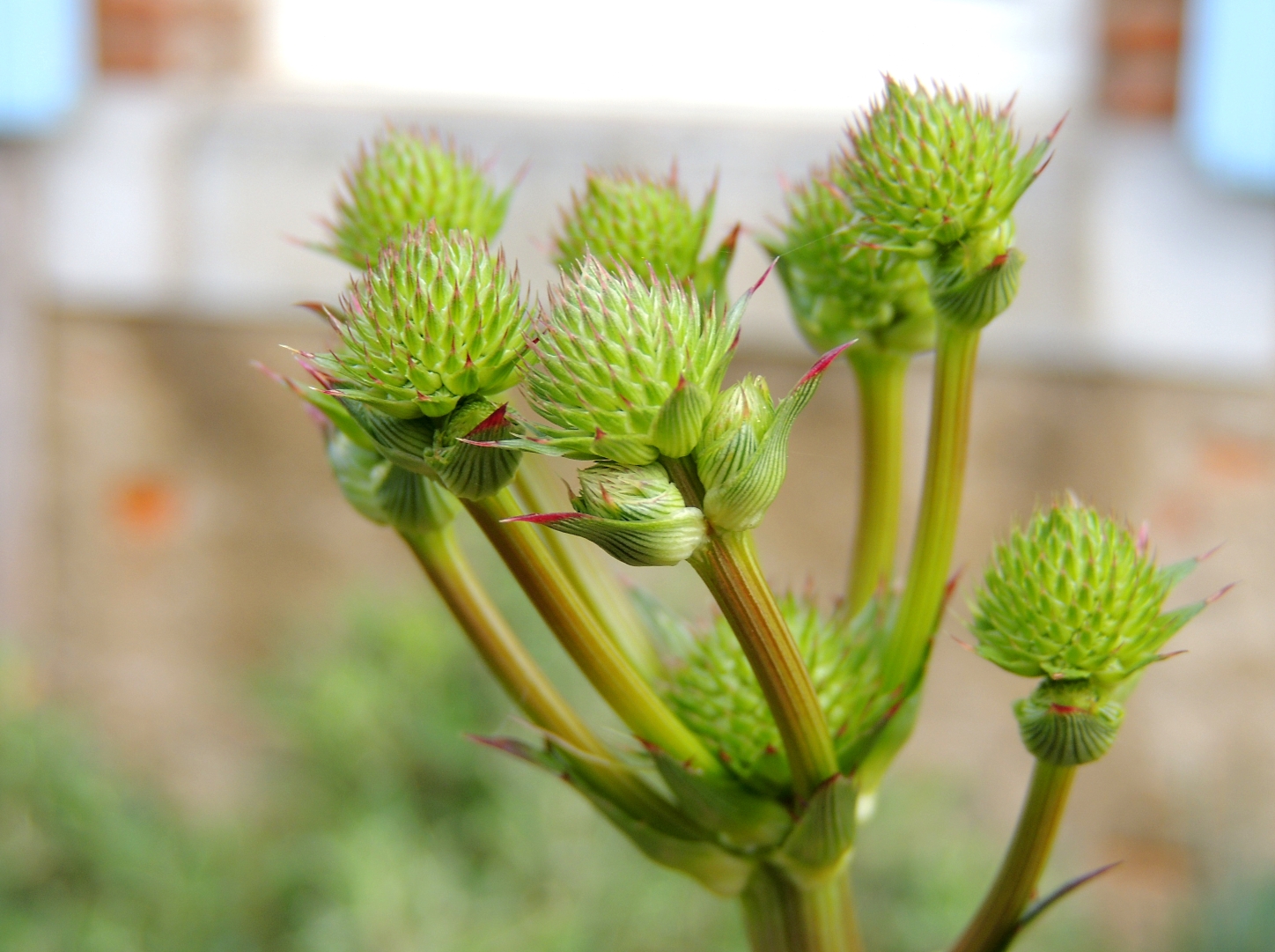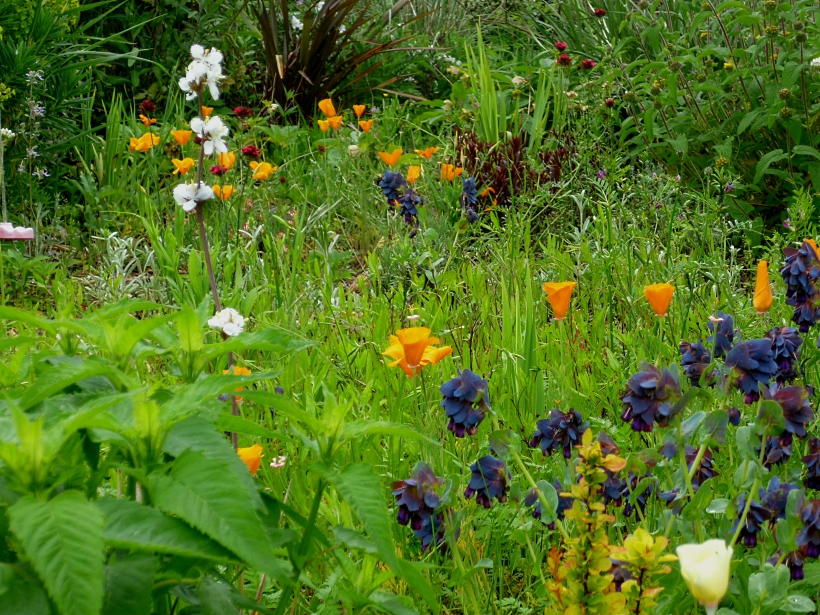
Two months later, it’s July 14th, and we are locked into an 8 day canicule with temperatures of 35c minimum during the day. Last week, in cooler times, I had the idea to take photographs in roughly the same spot as I had in May- to assess for myself what’s happening in the ‘garrigue-ish’ landscape at the front. This is my hot, stony, dry spot, totally exposed, which I started 18 months ago. I don’t water this at all, except in emergency in the first year of planting.

The May photograph above really shows how freshly green the plants are in mid May. The alliums hadn’t fully flowered and the Nigella makes a green froth weaving in and out of everything. The Lupinus arboreus alba with just a hint of blue, is just starting to flower.
July shows a more mature scene, although a little further down the slope than the May photo, and we are heading towards summer brown. In between, we have had had two belting weeks of 35-40c separated by cooler days and a lot of rain, especially rain at night with electric storms most nights. The plants that are coming through well are the Anisodontea capensis, still flowering and green, the Senecio Viravira, which has silvered up well, but the tree lupin is burnt away completely on the right hand side. The other great survivor is Phlomis chrysophylla to the centre of the photograph.

Senecio Viravira is a fabulous plant, always providing an accent anytime of the year. It is, however, very brittle, and easily breaks if brushed against. The good side of this is that plentiful cuttings can be taken from the broken bits which root easily in water. So, great though it is, it’s maybe best planted away from where feet or legs might go.

This is a new Anisodontea to me, and it has been in the ground since April. ‘El Rayo’ has a deeper pink, and slightly larger, flower than the capensis, but it is looking as tough and resiliant as the older plant. Here it is below, two months later, and it is bushing out nicely, whilst continuing to flower splendidly.


You don’t see Erodium Stephanie once the heat builds. It dies back but returns happily in the Spring. This is a new variety for me, and was only planted out in January this year. It’s a small but sturdy plant, with ferny foliage and makes a small clump eventually. If it behaves like Erodium pelargonifolium, which I grew from seed, it will really take off next year.

Further down the slope, are more cuttings from the old garden in Tostat. Phlomis ‘Le Sud’ simply adores Oloron. From a small cutting last year it has grown to well over a metre across and tall. Just starting to flower in mid May, it is over in mid July below, but the fantastic seed heads remain for months. Give it room, it needs it. Similarly, the Eryngium eburneums, that came as tiny babies and suffered until their tap roots got down into the rocky soil, but this year, were looking strong in May and flowering prodigiously in July. As the plants fatten and spread, there will be countless babies by next year, I am willing to bet good money on that.
The red Gaura is still struggling though. These were 3 plants planted out in early Spring this year, but they have not yet found their feet. A few feet away, the species plant, Gaura lindhemeri, is spreading and flowering profusely. This is the second group of red Gaura that I have planted, and it maybe that my slope is just too tough for them. Well, it’s three strikes and you’re out in my garden!

Another plant new to me this Spring is Medicargo arborea. Small now, and I think not tender, it will make a sprawly bush with good roots for stony soil, being a member of the pea family. It looks good in the lower photo from July.


And here is a real survivor that just deserves a little more more limelight, and an award for endurance. I had lost all my tree lupins in Tostat. But, in our last summer, I noticed that a tiny seedling had re-appeared and carefully dug it up. There must have been viable seed in the ground which got a cha,ce at life when I dug something up or planted something in. Amazing. Tree lupins are fabulous.

